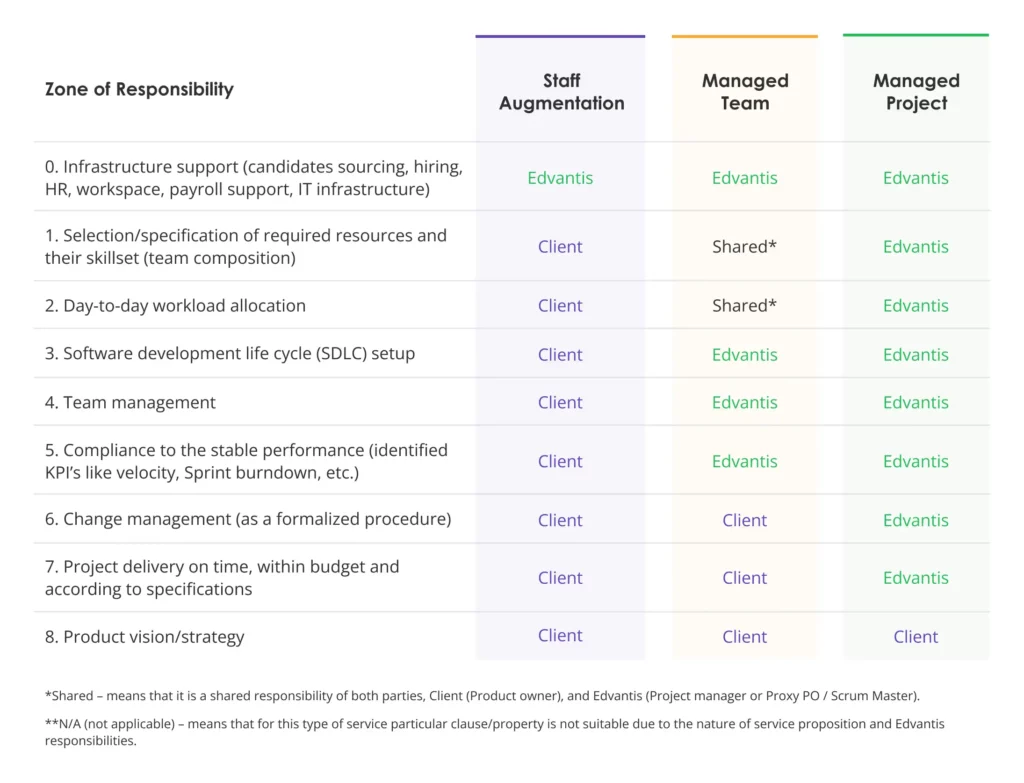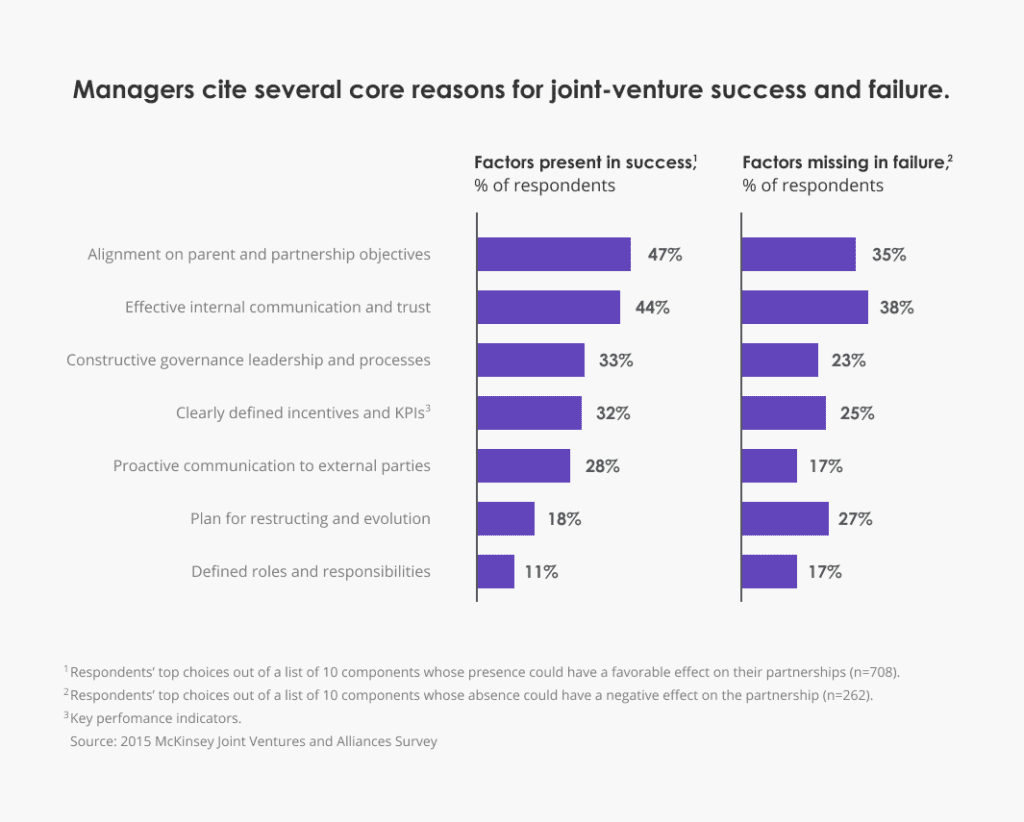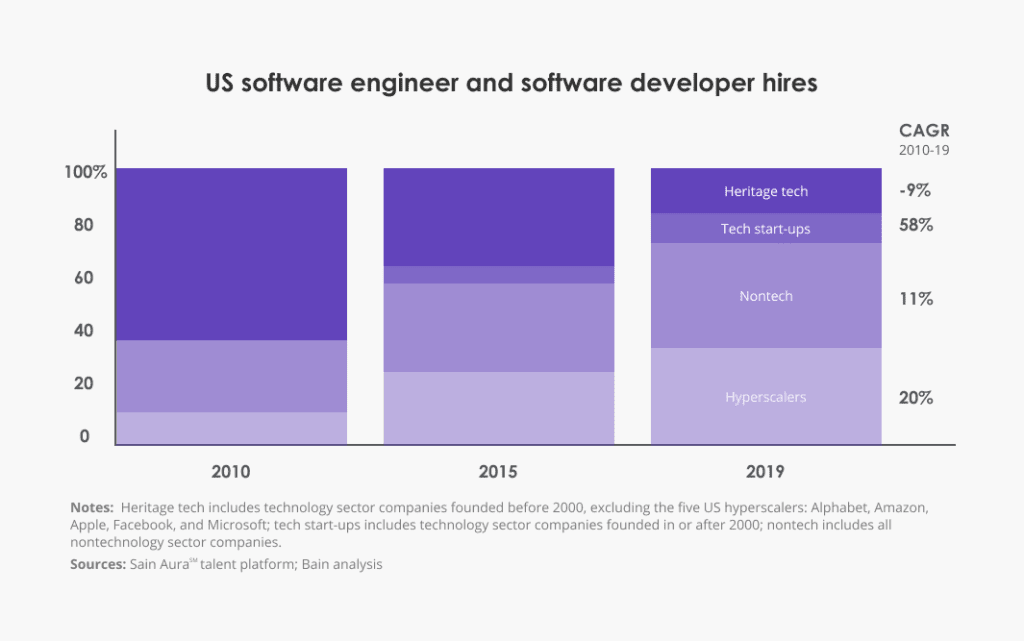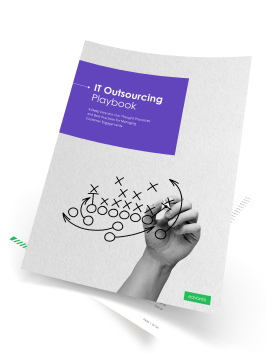
Outsourcing any IT project may seem like a leap of faith. Will your outsourcing partner have your back at all times? Or will the engagement stall for one reason or another?
It’s not always easy to model how a new partnership will go. Because too many factors are at play:
- The IT outsourcing partner’s service model
- Your operational readiness for outsourcing
- Clarity in project vision and requirements
- Overall experience with leading any strategic partnerships
There’s no “IT outsourcing done right” shortcut or cookie-cutter template to use. But there are some marginally right and wrong ways to structure collaboration with outsourced partners. That’s what we want to talk about in this post.
IT Outsourcing Partner or Outsourcing Vendor: What’s The Difference?
IT companies (us included) brand themselves under different names: “vendor,” “managed services provider,” and “technology partner.” But what stands behind them?
What is an outsourcing vendor?
A vendor is a business entity offering a solution to your problem here and now. Most have highly scoped, pain-point-specific offerings. Need a cloud-based identity management tool? Purchase this service plan. Are you looking to improve your threat-monitoring capabilities? We’ll analyze your infrastructure, right-size the software solution, and assist with the roll-out.
What is an outsourcing partner then?
The role of an outsourcing partner is to deliver continuous value by combining various types of services. Rather than walking in to solve one problem, a partner acts as an extension of your business, adapting their service delivery to your evolving business needs and priorities.
A sounding board for new technical ideas, an advisor on better talent acquisition and IT operations scaling, a skeptic not afraid of pushing back on unfeasible propositions — a reputable outsourcing partner plays all of those roles.
IT Outsourcing Service Model Selections: A Core Decision Affecting Technology Partnerships
If Netflix ever created a TV show about intricate IT outsourcing relationships, the “right person – wrong time” plot would turn into the “right technology partner – wrong service model.”
Service models are critical to your company’s IT outsourcing success since they are a foundation for identifying the expected scope of partnership.
Ideally, your potential partner should offer transparent and flexible service models with a detailed breakdown of conditions, which you can access during the vendor selection process.
A well-defined IT outsourcing service model helps you:
- Decide on the optimal level of partner’s involvement.
- Understand your area(s) of responsibility.
- Know what to expect from your vendor.
- Gain a clearer picture of service costs.
- Proactively plan the transition between models later (if you decide to scale up or down).
IT outsourcing will not produce the expected benefits when selecting a service model purely on a price basis or without considering your operational readiness. You’ll need to shape and work on your outsourcing partnership even with a great business idea from your end and excellent tech expertise from your partner’s side.
Examples of Well-Defined IT Outsourcing Service Models
Outsourcing vendors propose different definitions of their core services. At Edvantis, our service models include:
- Staff Augmentation: We find you qualified IT talent and handle all the administrative operations while you take away management tasks.
- Dedicated Team: We assembled a plug-and-play IT development team, recruited in line with your needs, and co-managed it.
- Fixed-price Project: Edvantis handles the entire end-to-end development based on the pre-approved scope of work.
Here’s the detailed breakdown of responsibilities for each service model:

As our customers evolve their business strategy, they can gradually transition between these service models. Suppose we are informed proactively about your plans. In that case, we can scale up or down our involvement — extend the team size, offer extra managerial support, or even take over your project entirely. After all, this is what good IT outsourcing partnerships have in common — an alignment of plans and a shared vision for the future.
How To Outsource IT Strategically: 4 Approaches
Strong IT outsourcing partnerships don’t emerge in a day like any relationship. It is a continuous process that begins with the search for service providers in specialized directories, the awkward “getting to know you phase,” the proactive “I think I get where you are going” period, to the final alignment when “I can finish the sentence you’ve started.”
Yes, you are cultivating a business relationship. But it is still a relationship where soft factors such as trust, good communication, and mutual understanding of shared goals are crucial for success.

Source: McKinsey
So how do you create a successful outsourcing partnership?
Treat an outsourcing partnership as a long-term investment. Be proactive at the early stages of the engagement process — share the essential project information and discuss your current priorities and long-term plans. Then, assess your internal processes and tweak them to accommodate the new partner. Decide on the scope of responsibilities on both ends, set KPIs, and always find extra time for communication and re-alignment.
That’s the short, general approach. Below are several partnership management strategies our company and clients have found to work well.
1. Take Advantage of the “Trial” Period
Many partnerships start small. It’s perfectly OK to be cautious and do a “test drive” before going high-speed galore.
We try to find common ground with you during the first several months of any new engagement. You get to learn our strengths — we get settled into your way off work. We test if we can deliver on your goals and build the foundational infrastructure for supporting you.
Communication here plays a vital role. In our case, we prefer a semi-formal communication plan — a timeline for regular check-ins to discuss your experience with us, address and resolve common issues, and figure out ways to do better. Structured and proactive communication helps us understand whether we are a good fit.
The early stages of collaboration are also a “grace period” for you and the vendor. It’s a stage where you decide if the cooperation is worth continuing.
Your outsourcing partner has to understand:
- How do you define the “success” of the engagement?
- What’s going to happen next if they meet all your expectations?
Understandably, you may not be in the sole position to decide on upscaling an engagement. Other stakeholders may need more persuasion. If we are aware of such dynamics, we can help you secure that “buy-in” by modeling different collaboration scenarios, stacking service models, or committing to providing a certain level of service by a specific date.
Great outsourcing partners can sacrifice immediate gain to get long-term results.
Proactively communicating your expectations plus longer-term plans is the pillar of any successful strategic partnership model. Take it from Robert Alvarez, COO & CFO of BigCommerce, our former client: “We brought [Edvantis team] on for an aggressive product roadmap. Over time, they took on more and more responsibilities, especially around our payment integrations our payments partners, and became integrated with our team. [At peak capacity], we worked with between 30–50 people.”
This engagement worked because BigCommerce progressively integrated Edvantis’ resources into their operations and treated the remote team as equal to internal ones. Robert Alvarez further notes, “The bigger the project, the more engaged they were. Unlike some other teams I’ve worked with, they want to be challenged.”
2. Communicate Your Business Dynamics
Every business goes through a series of ups and downs. The markets go into flux. Investment budgets get re-assigned. Funding rounds are taking longer than expected. Or you can finally release the big-ticket product and decide to switch to maintenance mode.
We recognize such dynamics. In fact, it was one of the reasons why we decided to create flexible, stackable outsourcing service models that allow you to obtain the expertise you need at any step of your project lifecycle, at the capacity you need.
The wrinkle is that we cannot tweak our services on abysmally short notice. Given how heated the IT staff augmentation market is, we can’t commit to upscaling a team of two into a team of twenty within a fortnight.
To benefit from “flexibility,” we need to understand your current impediments and future business drivers. This means you have to be proactive in sharing your plans with us.
An IT outsourcing partnership isn’t a SaaS tool subscription. You can’t click “pause” and then return to where you left off three months later.
After all, we are in the business of supplying the expertise. Top talent won’t sit idle on the market. High-skilled specialists will move on to the next best project. Yet, if we know your plans, we can better plan for the “slowdown” or “de-transition” period. For example, retain some core people to help with project handover or maintenance.
In most cases, the decision to change gears always happens earlier than the actual change. By keeping us in the loop, we’d be in a better position to support you through the next chapter.
3. Use Partner’s Knowledge to Grow Your Expertise
A good partner complements your expertise. You are adept in your business domain — we have the technical expertise and accumulated experience in project delivery practices.
Sure, you are seeking an outsourcing partner to solve a specific problem. However, when they have resolved the hot-button issue, you can also seek to gain extra value. For example:
- Get to know the local outsourcing marketing
- Pick up new SDLC best practices
- Hone your outsourcing process
- Get in a better shape for managing distributed operations
If you ask, we’d be happy to share our knowledge. Besides, you are not paying extra to learn how our SDLC process works or engage with our Business Analysts (BAs).
As one of our clients, Randy Ramirez of Benchwatch, notes: “Be specific in what you’re asking from them. When we relay that information, they can contribute to thinking through the problem. In the end, they often find things that I didn’t address. That helps me get the most out of working with Edvantis.”
Remember, an IT outsourcing partner is not about entirely replacing your key people — we are here to augment them. We understand that there will always be a dependency on us. So, we take the necessary steps to thoroughly document essential knowledge and transfer it back to your team.
The above also prevents you from being too informationally locked internally. That is when a handful of in-house specialists handle all your expertise. And they may want to change employers at some point, taking all the knowledge along. By diversifying your knowledge and operational best practices between the internal and external resources, you can get a trifecta of benefits:
- Have a strong strategic in-house project vision and managerial task force.
- Obtain extra resources from a vendor with a higher price-to-value-ratio.
- Opt for the buy-operate-transfer option at any time you feel ready.
Combining internal and external expertise allows you to run leaner, less disruption-prone operations while tapping into your partner’s knowledge whenever you face a roadblock. Use our experience — we know how and why things fail and what you can do to prevent that.
4. Consider Tailored Staffing
Another overlooked perk of a continuous relationship with an outsourcing partner is that you can set them up to supply you with talent on an ongoing basis.
For example, if you need specific expertise, we can set up a local training center for you to engage young talent from the local market and train them based on your needs. In this case, you gain a steady influx of new hires at relatively short notice and protect your business from talent gaps.
It’s a common scenario when a Big Tech firm lands in a new market and sweeps most of the available IT talent. As Bain data from 2021 suggests, hyper scalers — Alphabet, Amazon, Apple, Facebook, and Microsoft — are taking away the majority of talent:

Source: Bain
In 2020, when most businesses were getting their act together and cutting costs, Facebook hired an extra 10,000 product and engineering employees, while Amazon sought to fill over 20,000 tech roles.
As a smaller company, you may not be in a shape to compete with such behemoths. But you can choose not to engage in the talent wars with them and build a “backup” talent pipeline with the help of an outsourcing partner.
To Conclude
Cultivating a successful IT outsourcing partnership is a “learning by doing” experience. It requires intentional commitment and focus from your end, as well as proactivity and transparency from your partner’s end. Recognize each other’s strengths, stay open to suggestions and propositions, give your partner the room to voice their recommendations, and inquire about your plans. Such a degree of “openness” takes time to cultivate, but its ROI can exceed your boldest projections.
Contact Edvantis to learn more about our IT partnership principles and approaches to collaboration.







